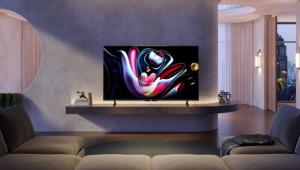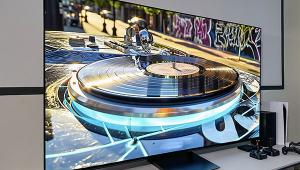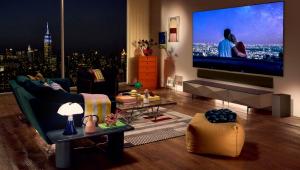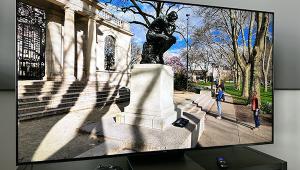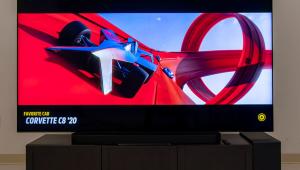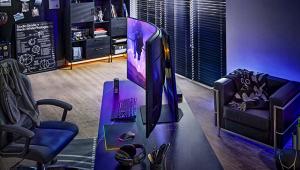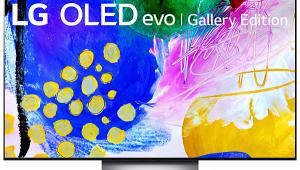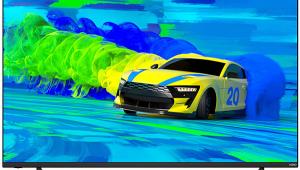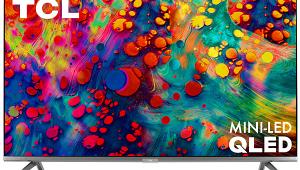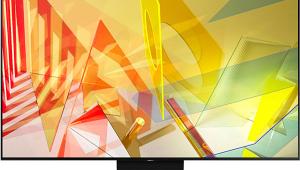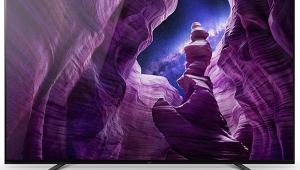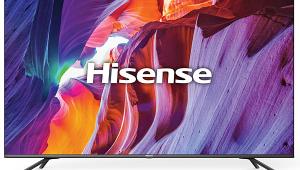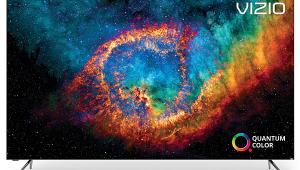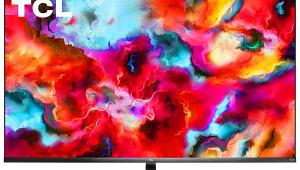LG 65UH8500 LCD Ultra HDTV Review Test Bench
Full-On/Full-Off Contrast Ratio: 19,600:1
Measurements were taken with an AVFoundry VideoForge 1080p generator, Murideo Six-G 4K generator, X-Rite i1Pro 2 Enhanced spectro- radiometer, Klein K-10A colorimeter, and SpectraCal CalMAN 5 2016 calibration software.


Pre-calibration measurements were of the ISF Dark Room preset with default settings. Post-calibration, with the LED Local Dimming set to Medium, peak brightness measured 39.2 foot-lamberts. The LG’s backlight goes to full off (infinite contrast) when presented with a 100% black test pattern, so I introduced the remote’s floating cursor in a screen corner to activate the backlight, for a measurement of 0.0020 ft-L and contrast ratio of 19,600:1. With the remote cursor directly above the measurement point (rather than in a corner), vertical backlight banding resulted in a black level of 0.0050, for a contrast ratio of 7,840:1. Max peak white was measured in Vivid mode: 111.3 ft-L on a full-field white raster, or 164.5 ft-L with a 50% white window.
Max peak white in the HDR10 HDR Bright mode, with 1,000-nit test patterns, was 444.6 nits with a 25% window. Max peak white in the HDR10 Vivid mode was 514.9 nits with a 10% window.
Average Rec. 709 (SDR) Delta E for pre-cal grayscale was 3.27, with a high of 5.09 at 50 IRE (50% brightness). After calibration, average Delta E was 2.00, with a high of 3.06 at 50 IRE. (Delta E is a figure of merit that indicates how closely a display adheres to the Rec. 709 HD color standard. Levels below 3 are considered visibly indistinguishable from perfect.)
Delta E for pre-cal color gamut averaged 3.03 but included higher than preferred errors in blue (5.06), cyan (4.28), and magenta (3.87). Attempts to bring the blue in line resulted in undesirable visual results, but with minor adjustments the magenta Delta E was reduced to 3.15, and the resulting average Delta E was 2.79 (with the blue and cyan errors remaining). This had no apparent effect on the subjective color, which never appeared off in any way.
Pre-calibration gamma averaged 1.98 with the 2.2 preset engaged. Calibration resulted in average gamma of 2.20 on the same preset. Viewing angle was among the best I’ve seen for an LCD TV due to use of an IPS (in-plane switching) panel type, with no fading of contrast or shifting of color visible at any reasonable position in my room. Picture uniformity was excellent on full-field patterns, but the zone-dimmed backlight displayed vertical bands of light on full-field black when it was called upon to illumi- nate small objects on screen. These were never visible in program material, but some backlight artifacts could be seen in the letterbox bars above and below widescreen images. Halos were obvious around white objects on dark backgrounds, such as the white Oppo logo that bounces around a black background. This is an LED backlight torture test, and most LCD TVs will show some haloing around bright objects, but emissive display technologies like plasma and OLED show virtually none, and the best LCD sets do a better job.

The 65UH8500 passed our video processing tests with flying colors.—RS
- Log in or register to post comments

